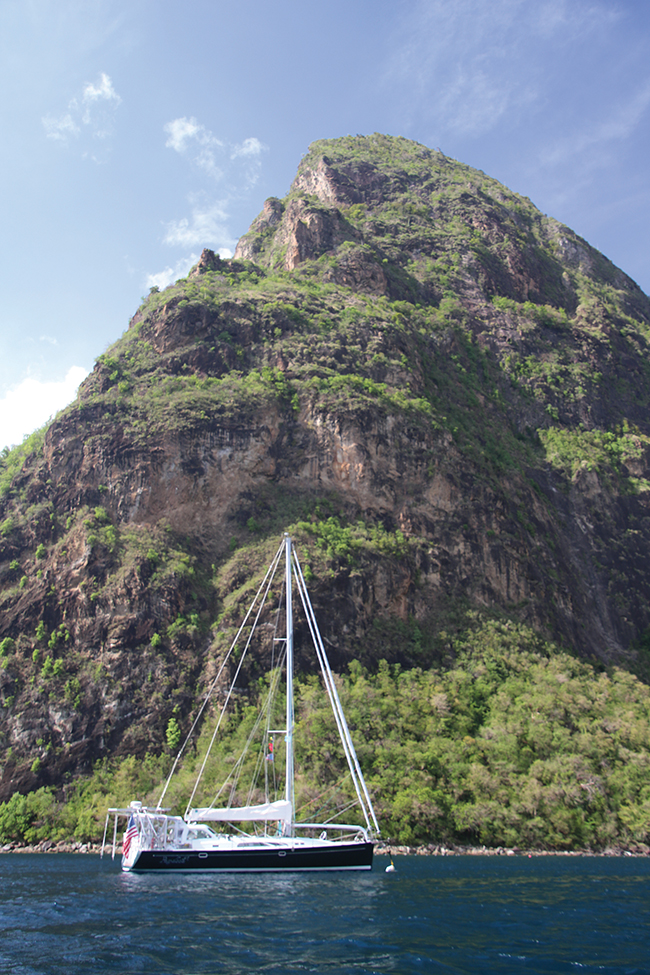From Antigua south to Grenada, the southern islands of the Lesser Antilles offer near-perfect cruising without the crowds (published June/July 2018)
The islands of the Eastern Caribbean form a graceful arc from Puerto Rico south to Trinidad, close to Venezuela. The Leeward Islands run from Anguilla to Dominica and the Windward Islands from Martinique to Grenada, a distance of approximately 450 miles.
Each year I run Pandora, our 47-foot Aerodyne sloop, designed by Rodger Martin, south from our home in Connecticut. Past seasons have taken us to the ICW, Bahamas, Cuba and in most recent years, the eastern Caribbean.
The Windward islands, the southern portion of the Lesser Antilles, was Brenda’s and my destination for the 2017/2018 cruising season. They are a chain of islands running north-south for a distance of approximately 200 miles, south of the Leewards. The main islands of the chain, north to south are Martinique, St. Lucia, and St. Vincent. The Grenadines, which are part of St. Vincent, are made up of many smaller islands, before reaching Cariacou and Grenada the most southern islands in the Windward chain. The Windwards got their name because ships sailing to the New World were required to sail closer to the wind to reach these islands versus the Leeward islands to the north.
As a cruising destination, the Windwards are just about ideal with short, line-of-sight passages between islands. Passages between islands generally offer an exhilarating ride in brisk trade winds but the wind angle is usually a comfortable reach with consistently easterly trade winds. During the winter months, wind speeds are generally in the low 20s to low 30s, strongest between December and March when the “Christmas winds” blow; as spring approaches they diminish to the mid to high teens.
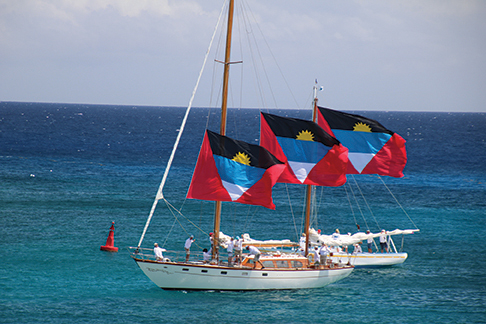
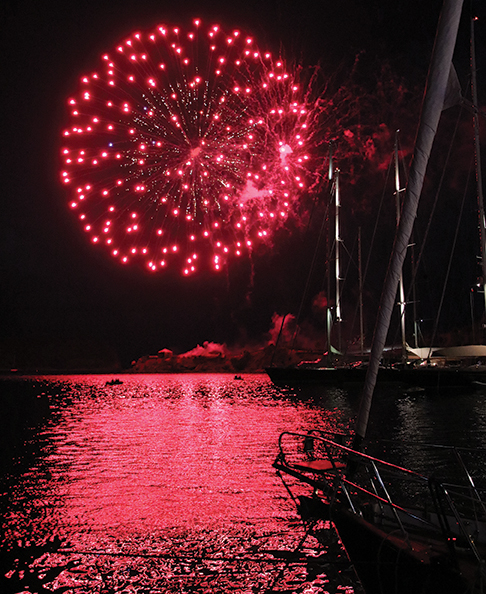 ANTIGUA
ANTIGUA
Many skippers agree that the best place to make landfall from the U.S. or Europe is in the more southern islands in the Caribbean, and for me, Antigua, centrally located and technically at the southern end of the Leeward chain, offers a near perfect starting destination for a season of cruising.
From there it is easy sailing south to the Windwards as well as north to the BVIs and Puerto Rico. The Bahamas are also reachable if your plans take you north later in the season. Visiting the often crowded Virgins is best in the spring when the charter crowds are less. Not surprisingly, easy reaching, both north and south from Antigua, was why the British Navy used that island as their primary base during the age of sail.
Many cruisers also leave their boats in Antigua while they head home for the holidays following their run south in the fall. Dockage and moorings are plentiful and inexpensive by U.S. standards. Additionally, there are plenty of skilled craftsmen available to fix anything or make upgrades that might be required following a run south. A skilled workforce is one of the reasons that many of the sailing mega-yachts make Antigua their home for the season, and it’s a rare day that craftsman are not working hard on some job or other to keep these magnificent machines in top condition.
While the northern islands in the Caribbean are relatively low in elevation and thus fairly arid, the more southern islands offer dramatic scenery and lush mountains with many islands sporting spectacular rainforests and rivers.
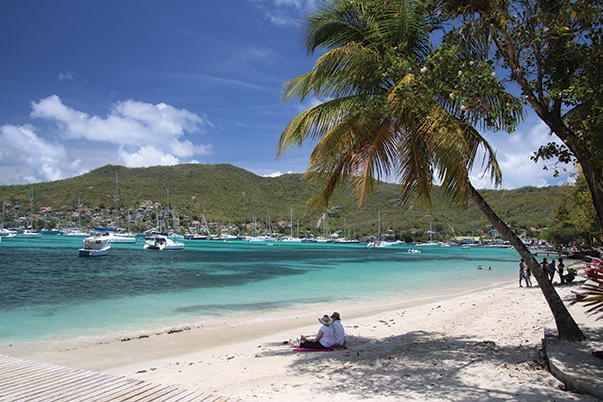 MARTINIQUE
MARTINIQUE
The largest island in the Windwards, and one of our favorites, is Martinique and is rich in history and has many services for visiting cruisers. The largest charter fleet in the Windwards makes its home in Le Marin with a huge marina and well maintained mooring field at prices that are quite low by U.S. standards. I rented a nearly new mooring for a month for $125 U.S., less than the cost of two nights in some of the harbors in the Northeastern U.S. that I have visited. And, just about any item you might need for the boat can be found at the three nearby chandleries.
Making crew changes in Martinique is easy with regularly scheduled flights to the U.S. at very reasonable prices. For example, a round trip on Norwegian Air to Providence, RI, or New York, can be had for about $250 U.S.
It’s a great idea to rent a car to explore the island as there are many huge U.S. style markets within easy driving distance and if you are into hiking there are numerous trails in the rainforests. For the energetic, a hike up to the crater lip of Mount Pelée, the dormant volcano that erupted violently in 1902 makes for a wonderful day. Be sure to bring a rain poncho as Pelée is true to its name as one of the “islands that kiss the clouds”.
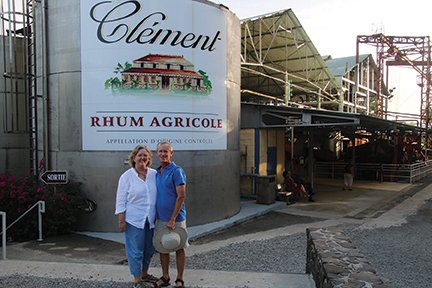 For Brenda and me, the best thing about Martinique, and the other French islands in the Windward chain is the excellent and reasonably priced French food and wine. And, if you are into rum, there are many wonderful distilleries on the island, worth visiting.
For Brenda and me, the best thing about Martinique, and the other French islands in the Windward chain is the excellent and reasonably priced French food and wine. And, if you are into rum, there are many wonderful distilleries on the island, worth visiting.
There is nothing quite like heading ashore early in the morning to check email on the balcony of a French bakery overlooking the harbor while enjoying a cup of café au lait and a fresh croissant.
Many cruisers are familiar with the Virgin Islands as a result of charter vacations, but fewer have ventured south to the Windwards which also have a vibrant charter fleet. Most of the islands are safe but there is some concern about safety in the harbors and for this reason, most cruisers unfortunately bypass St.Vincent and instead continue on to the beautiful Grenadines.
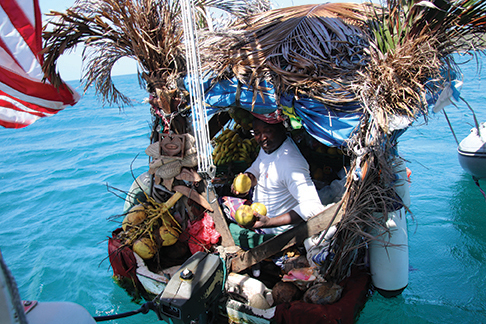 We also heard a lot about “boat boys” in some harbors hassling cruisers, but our experience was that a simple “no-thanks” generally sent them on their way. Of course, we also found that they could be very helpful for picking up a mooring or even assisting in booking a rental car from an agency that was less expensive than the ones associated with the big marinas.
We also heard a lot about “boat boys” in some harbors hassling cruisers, but our experience was that a simple “no-thanks” generally sent them on their way. Of course, we also found that they could be very helpful for picking up a mooring or even assisting in booking a rental car from an agency that was less expensive than the ones associated with the big marinas.
ST. LUCIA
The next island is St. Lucia, only 20 miles south of Martinique. There are a number of wonderful harbors on the leeward side including Rodney Bay, a great spot for provisioning. A short distance further south is Marigot, one of our favorite stops when we are looking for a bit of luxury. For $30 U.S., the daily price of a mooring off of the Marigot Bay Resort and Marina, you are also entitled to use the pool and other facilities of this first class resort, including two infinity pools, as well as the hotel concierge who will arrange for just about anything you might need.
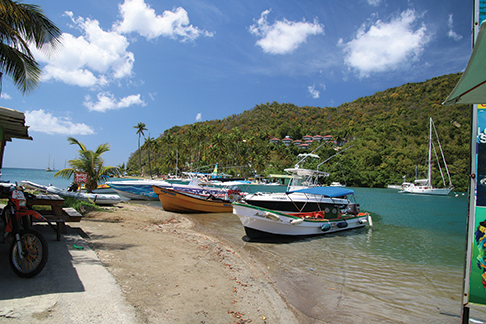 St. Lucia is also known for the dramatic Pitons, the remnants of two long extinct volcanos located on the southwestern tip of the island. These towering spires of rock rise abruptly from the water over one thousand feet and offer a spectacular view unequaled by any place we have visited.
St. Lucia is also known for the dramatic Pitons, the remnants of two long extinct volcanos located on the southwestern tip of the island. These towering spires of rock rise abruptly from the water over one thousand feet and offer a spectacular view unequaled by any place we have visited.
With a modestly priced park pass you can pick up one of the numerous moorings available at the base of these magnificent rock formations. Get there early in the day to get one of the best positioned moorings. There is no way to anchor as the bottom drops off precipitously, very close to shore. Our mooring, perhaps only 100 yards from the black volcanic sand beach, was in 140 feet of water. There is also a beautiful resort on the beach that you can visit with your dinghy. Bring your wallet! It’s a treat. Way up on the hillside, overlooking the dramatic peaks is the striking Dasheene Restaurant and Resort with an amazing view of the nearby Pitons, a spot not to be missed for a meal or a drink as the sun sets.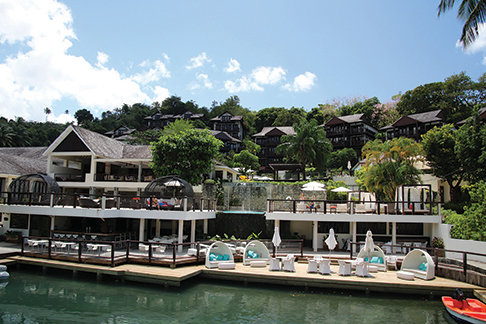
THE GRENADINES
South of St. Vincent is the first island in the Grenadines, Bequia, another favorite island, with colorful culture and a vibrant sailing community. The week-long Easter Regatta is very popular with both competitive sailors and laidback cruisers, and boats come from all over to enjoy the parties and daily racing. Bequia is also a particularly good place to have canvas work done with many cruisers, including us, opting to get sun protective chaps for their tenders. We ordered ours, had them the very next day, and they fit perfectly at a price that was half or less of what we would paid in the U.S. We also had some varnish work done and were very happy with the results and great value. Many cruisers we met along the way plan to have varnish work done each season when they visit and we will too. 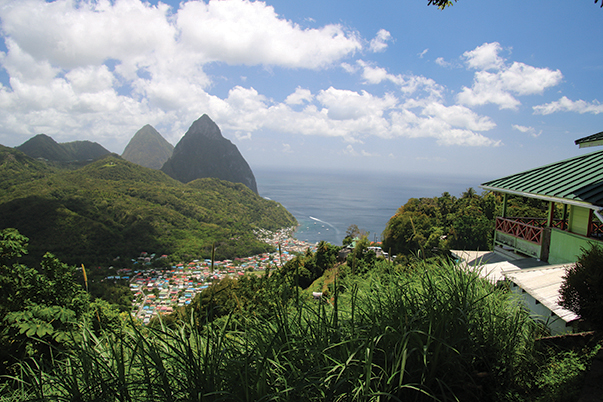
Boatbuilding is also alive and well in Bequia, supporting a very active youth sailing program. Bequia is the northern most island in the Grenadines and while most cruisers avoid St. Vincent because of persistent security problems, the Grenadines, a chain of many small islands that some say remind them of the Bahamas, are a joy to visit. This season, our first to the area was somewhat limited but based on our experience, we plan on doing more exploring next season.
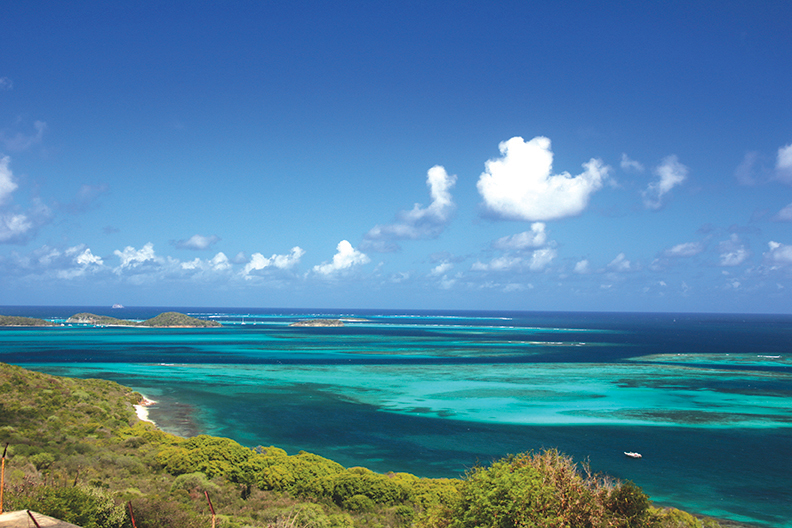 We visited The Tobago Cays, that certainly reminded us of our time in the Bahamas with its mostly low islands with vibrant reefs teeming with fish and turtles. South of The Tobago Cays are plenty of other islands in the Grenadines, each only a few miles apart, that we look forward to exploring.
We visited The Tobago Cays, that certainly reminded us of our time in the Bahamas with its mostly low islands with vibrant reefs teeming with fish and turtles. South of The Tobago Cays are plenty of other islands in the Grenadines, each only a few miles apart, that we look forward to exploring.
SAILING WITH SALTY DAWGS
We will surely be back next season and our plan will be to make a run from New England south with the Salty Dawg Fall Rally, the largest rally to the Caribbean from the U.S., including a stop for a few days in Bermuda, before continuing on to Antigua.
As the Antigua port captain for the rally, I can promise a great arrival with many terrific events planned in Antigua for rally participants. This year there are planned departures for the Salty Dawg Fall Rally from the Essex Yacht Club in Essex, CT, and the Blue Water Yachting Center in Hampton, VA. Interested in learning more about making the trip? The non-profit Salty Dawg Sailing Association www.saltydawgsailing.org is a great group and can help you make your voyage the best possible.
And speaking of landfall in Antigua, I can’t imagine a place that will wow you and your crew more than an arrival at the iconic Nelson’s Dockyard in English Harbour, long the home of the British Royal Navy and once home to Lord Nelson himself.
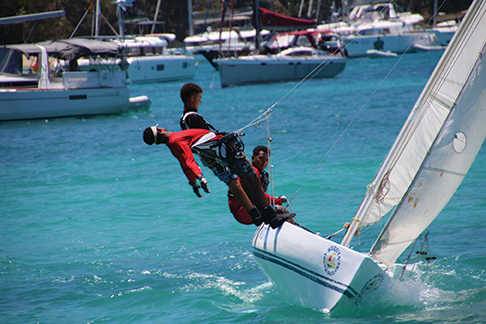 Many magnificent classics and modern speed demon sailing yachts make Antigua their home port and jumping off point for exploring the eastern Caribbean for the winter season and perhaps you should too. You won’t be disappointed.
Many magnificent classics and modern speed demon sailing yachts make Antigua their home port and jumping off point for exploring the eastern Caribbean for the winter season and perhaps you should too. You won’t be disappointed.
The author has kept a blog of their travels for over a decade with regular updates of places that they have visited including a number of seasons in the Bahamas, extensive travels on the Intracoastal Waterway and two months exploring the south coast of Cuba in March and April of 2016. See BWS September 2016 for Cruising Cuba: A First Timer’s Perspective as well as BWS September 2017 Into the Leeward Isles for articles about these destinations.
Resources:
Local information on Antigua and Barbuda.
www.antigua-barbuda.org/
Antigua Marine Trade Association portal:
www.antiguanice.com
Weather routing: Chris Parker’s Marine Weather Center,
the first choice of cruisers in the Caribbean.
www.mwxc.com
Salty Dawg Rally to the Caribbean: The Largest rally
to the Caribbean from the U.S.
www.saltydawgsailing.com
Cruising guides to the Caribbean: Chris Doyle has
a series of excellent guides.
www.doyleguides.com
Navigation guides: NV Charts and cruising guides
are very accurate and available in print and electronically.
us.nvcharts.com/

















